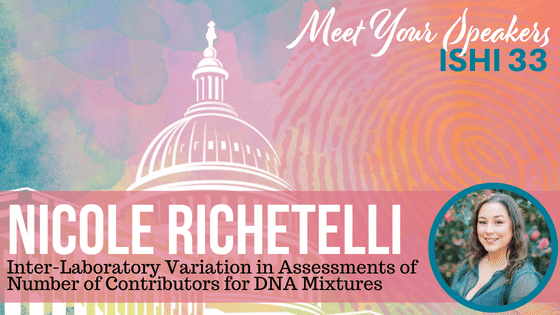DNAmix 2021 is a rigorous, large-scale study conducted to evaluate the extent of consistency and variation among forensic laboratories in interpretations and statistical analyses of DNA mixtures, and to assess the effects of various potential sources of variability. To this end, this study utilized a four-phased approach:
- Policies and Procedures (P&P) Questionnaire — Online questionnaire to assess laboratory policies and procedures relevant to DNA mixture interpretation (notably systems, types of statistics reported, and parameter settings used).
- Casework Scenario Questionnaire — Assess analysis procedures or decisions that may vary depending upon the case scenario and the nature of mixture casework conducted by the
- Number of Contributors (NoC) Subtest — Assessment of suitability and number of contributors, given electropherogram data for 12 DNA mixtures.
- Interpretation, Comparison, and Statistical Analysis (ICSA) Subtest — Interpretations, comparisons, and statistical analyses for 8 DNA mixtures provided with DNA profiles of potential
In total, each participating laboratory that completed the NoC and ICSA Subtests submitted responses on 20 distinct mixtures (provided to participants as electropherograms); partial participation was accepted. These mixtures were created under controlled conditions to allow for ground truth attribution, and were selected using a “bracketing approach” (as detailed by Butler, et. al. 20211) to cover as much of the factor space as practical given the limited number of samples completed by each participating laboratory. Mixtures were created to be broadly representative of the range of attributes encountered in casework. All DNA profiles used in this study (mixtures and references) were from real people; no profiles were simulated or contrived.
In her presentation at ISHI 33 this year, Nicole will focus on a portion of the results from the overall study: over 1,200 assessments of suitability and number of contributors (if applicable) reported by participating labs in Phases 3 and 4 of DNAmix 2021. Participants submitted responses regarding whether an assigned mixture was suitable, any factors that indicated the mixture was not suitable, the estimated number of contributors in a mixture, and any factors that affected this estimate. During this presentation, we will report on the observed level of variation in these responses as well as discuss the amount of variation that can reasonably be explained by differences in laboratory standard operating procedures. We chatted with her to discuss the impetus for the study and why it’s important to study mixture deconvolution.
Can you briefly discuss the DNAmix 2021 study? What was the impetus for the study and what did it entail? What types of mixture samples were provided to participants?
DNAmix 2021 is a rigorous, large-scale study conducted to evaluate the extent of consistency and variation among forensic laboratories in interpretations and statistical analyses of DNA mixtures, and to assess the effects of various potential sources of variability. The study was conducted in four phases. This presentation will discuss the results of the final two phases: the Number of Contributors (NOC) Subtest and the Interpretation, Comparison and Statistical Analysis (ICSA) Subtest. Each participating laboratory that completed DNAmix 2021 submitted interpretations on 20 distinct mixtures; participants also conducted comparisons and statistical analyses for 8 of these mixtures. All mixtures were created under controlled conditions to allow for ground truth attribution. Mixtures were created to be broadly representative of the range of attributes encountered in casework. All DNA profiles used in this study (mixtures and references) were from real people; no profiles were simulated or contrived.
How many laboratories participated in the study? Can you briefly describe the different methods that were used by these laboratories to “solve” the mixtures?
We are excited to share these details during our presentation!
Why is it important to study mixture deconvolution?
Policy makers, laboratory managers, and the legal system all need a rigorous understanding of the extent of consistency/variation that can be expected if a DNA mixture is sent to more than one lab.
What tips would you give to someone who is just starting out in the field of forensics, or what is the best advice that you’ve received?
Expose yourself to a variety of different forensic disciplines in both study and in practice (internships, research, shadowing, etc.). Not only will this help you to decide on your career path, but the critical thinking that you learn and the knowledge of the principles and methods used in one discipline may help you to better understand or inspire new innovation in another discipline.
If you had to pick one thing, what do you enjoy most about your job?
Forensic science has a fascinating variety of details in its various disciplines, and the work is greatly rewarding. Every day is like a new puzzle.
If you could have dinner with anyone (dead or alive), who would it be? Why?
Leonardo, David Bowie, Bigfoot…if Bigfoot shows up, you know the legend is true!
WOULD YOU LIKE TO SEE MORE ARTICLES LIKE THIS? SUBSCRIBE TO THE ISHI BLOG BELOW!
SUBSCRIBE NOW!


